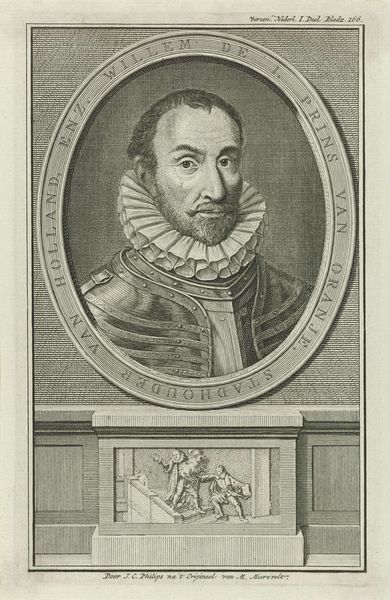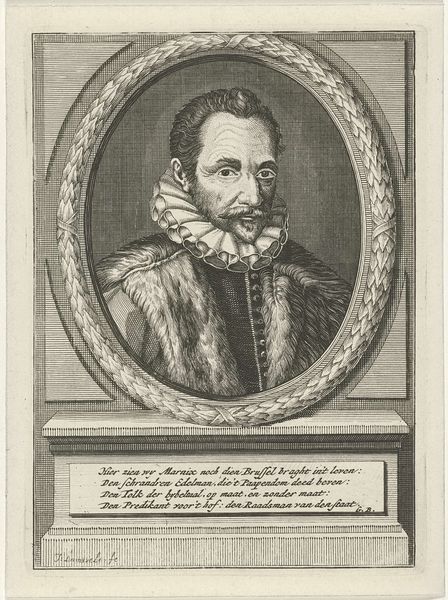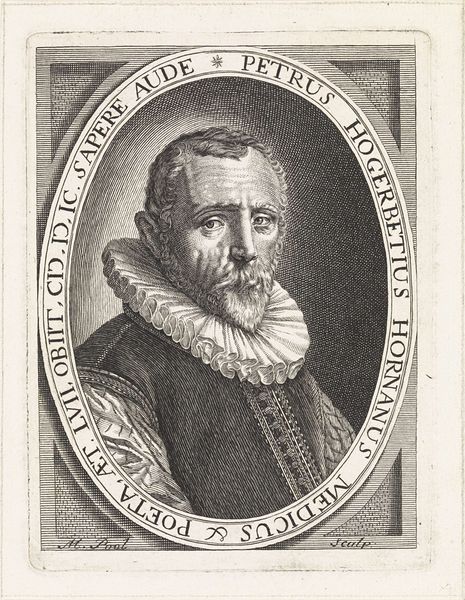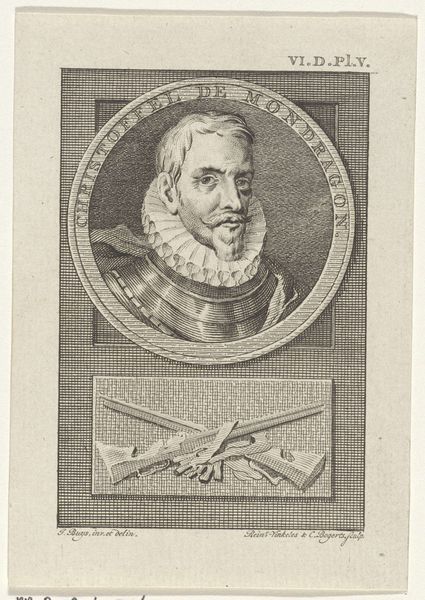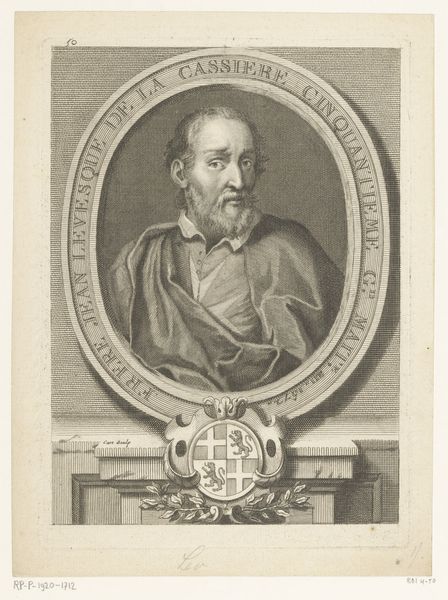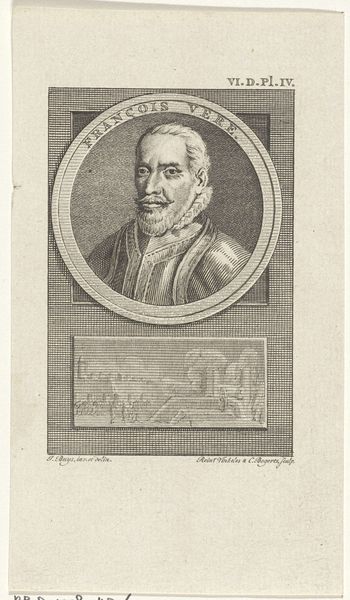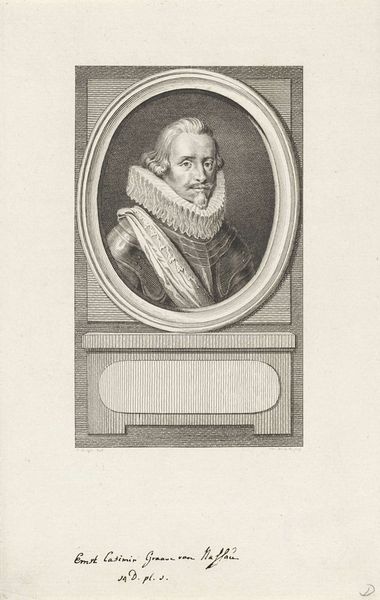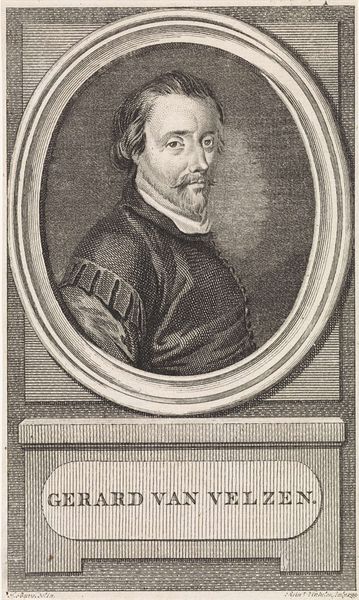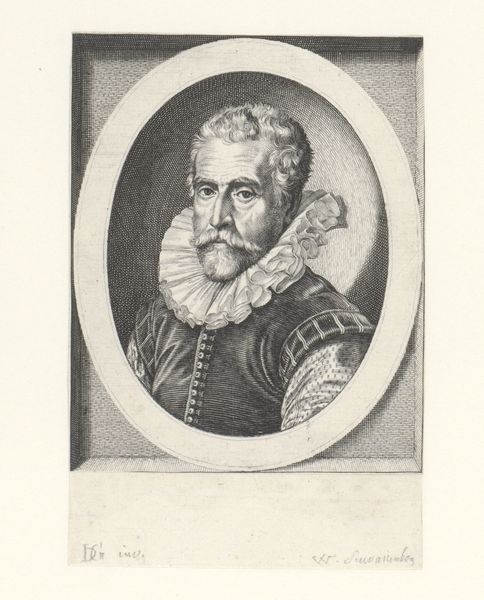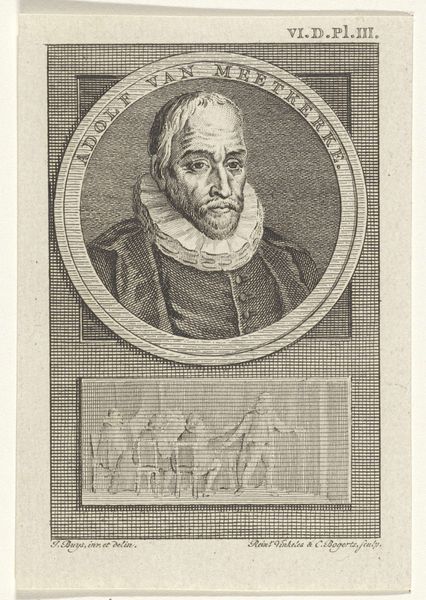
Dimensions: width 92 mm, width 63 mm
Copyright: Rijks Museum: Open Domain
Reinier Vinkeles made this engraving, Portret van Jan Neyen, sometime between the late 18th and early 19th century. Engraving is an intaglio process where the artist carefully carves lines into a metal plate, which are then filled with ink and printed onto paper. Look closely, and you’ll notice the intricate details. The sharp, clean lines give the portrait a crisp appearance, and the texture is created through fine hatching and cross-hatching, a labor-intensive process. The different tones are built up by varying the density of the lines, creating depth and volume in Jan Neyen's face and clothing. Engraving like this required highly specialized skill, and a significant amount of time. Consider the social context, where prints like these were a popular means of disseminating images and information. They were relatively affordable, and circulated widely. Vinkeles and other engravers were crucial in shaping visual culture, reproducing paintings, portraits, and historical scenes for a growing public audience. By understanding the materials and the making process, we can appreciate the artistry and cultural significance embedded in this seemingly simple print.
Comments
No comments
Be the first to comment and join the conversation on the ultimate creative platform.
